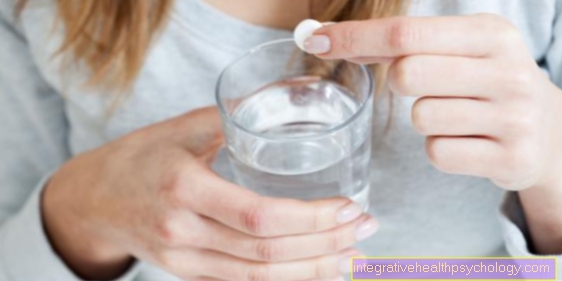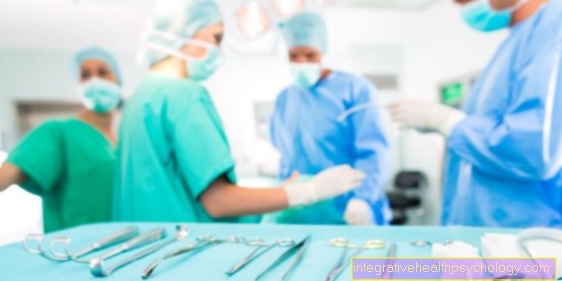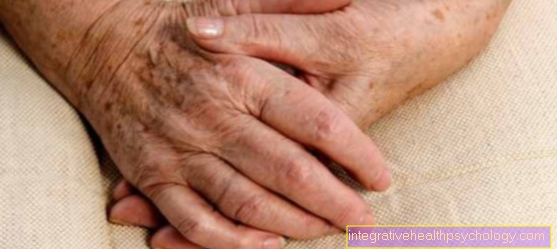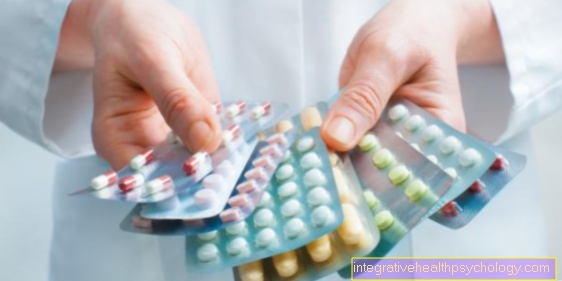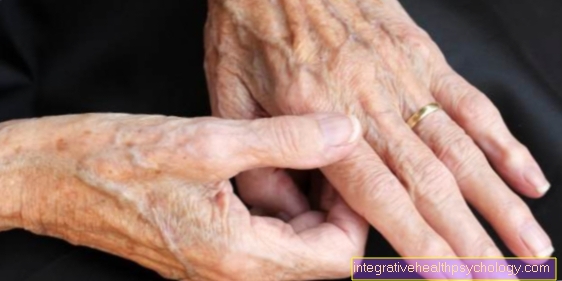Prostate enlargement therapy
introduction
The Prostate enlargement (benign prostate hyperplasia) is a tissue change in the prostate (Prostate gland), which leads to an increase in the size of the organ. An enlarged prostate can be present without any symptoms. Bring them to Discomfort when urinating and with continence, this is technically called benign prostate syndrome (BPD) summarized. The goals of therapy should be to improve quality of life, reduce symptoms and, in the long term, prevent complications or slow the progression of the disease. The therapy should be individually tailored to each patient and decided jointly by doctor and patient.
In addition, the success of the therapy should be monitored and checked with a questionnaire on symptoms and with the measurement of parameters such as urine flow. An enlarged prostate can conservative or operational be treated. Conservative treatment includes controlled waiting, treatment with plant extracts (Phytotherapy) and with medication. In surgical therapy, the prostate is reduced in size with various techniques and it can expand Stents in the narrowed urethra (Urethral stricture)be set.
Radiologically there is one MRI of the prostate on.
conservative therapy

At the kcontrolled wait one observes the complaints and does not treat them. This procedure is based on the knowledge that there can be an improvement even if left untreated. In addition, the course of prostate enlargement can be positively influenced by changes in behavior: The fluid intake should be controlled and evenly distributed throughout the day and not exceed 1500 ml per day. Alcohol, coffee and hot spices should be avoided because of their dehydrating or urinary tract-irritating effects.
Dehydrating medication (especially Diuretics) should not be taken in the evening. Through bladder training and Pelvic floor training complaints can be reduced. Controlled waiting is particularly suitable for patients with low levels of psychological stress, for whom the risk of further deterioration is estimated to be low, and who are willing to change their lifestyle. However, regular checks are extremely important.
As "litter" Method are plant extracts as a treatment (Phytotherapy) spread. However, most health insurance companies do not reimburse the costs. The mechanism of action of most preparations is not clearly understood. Another problem is that the plant extracts are composed of many substances in a highly complex manner. It is often not known which substance is responsible for the effect. Preparations from different manufacturers are difficult to compare with one another due to different manufacturing processes.
There are individual proofs of effectiveness from the manufacturers in relation to the acute symptoms of BPD, but an effect on the long-term course of the disease has not yet been proven. The side effects are very rare and mild. The fruits of the sawtooth palm and the roots of pines or pine trees have a lot of free fatty acids and are thus supposed to promote the formation of the active ones responsible for prostate enlargement Testosterone (Dihydrotestosterone, DHT).
In Nettle-Extracts can be found a lot Vitamin A, C., E., D. and K, lots of minerals and unsaturated fatty acids. It is unclear which substances should be responsible for the effect. pumpkin seed and extracts from the bark of the African plum tree are said to include anti-inflammatory have an impact on the prostate. Pollen extracts (e.g. from rye) are also sold in Europe. Combination preparations are also available.
In the drug therapy one can fall back on different groups of drugs that are approved for the treatment of prostate enlargement. Alpha blockers (e.g. Alfuzosin) relax the muscles of the prostate and urethra. This leads to a rapid improvement in symptoms within days. In the long term, there is a slight delay in the development of the disease, but without really preventing the enlargement of the prostate. The larger the prostate is at the start of therapy, the less effective alpha blockers are. Since α-blockers originally opposed high blood pressure were used are one of the side effects Circulatory disorders (dizziness, Fatigue and breakdowns) as well a headache.
Delayed-release preparations in the intestine are better tolerated. You are not allowed to Heart failure be taken. 5α-reductase inhibitors (e.g. Finasteride) inhibit the formation of active testosterone (DHT). The symptoms only improve after several months. They should be taken as long-term therapy (over 1 year) and can then delay the progression of the symptoms. The side effects mainly affect the sexual functions. Ejaculation disorders, loss of libido, Erectile dysfunction as well as an enlargement of the mammary glands can occur. The side effects diminish over the course of treatment.
Muscarinic receptor antagonists (e.g. Darifenacin) as a third group are mainly effective against the sudden and frequent urge to urinate. They are not recommended as the sole therapy for other complaints and for obstruction of the urinary tract. The main side effect is dry mouth. The newest drugs in the treatment of prostate enlargement are these Phosphodiesterase inhibitors. Until now they have been used for erectile dysfunction. The most famous representative of this group is that Sildenafil (Viagra). Tadalafil, which works according to the same mechanism, was also approved in 2012 for the treatment of prostate enlargement. The subjective complaints are reduced by treatment and the measurable urine flow improves after a while. However, there are still no data on whether the course of the disease is positively influenced in the long term.
Side effects include indigestion in the upper abdomen, headache, and hot flashes. You are not allowed to have heart failure or any coronary artery disease be taken. In addition to treatment with a drug, there is the option of treating with a combination. The effects can be complementary, but the side effects also add up. A long-term combination of α-blockers and 5α-reductase inhibitors is recommended for patients with moderate to severe symptoms and a high risk of deterioration. An α-blocker and muscarinic receptor antagonist are acutely effective against urination symptoms.
Shortly:
- "Watch and wait"
- Phytotherapy (Greek phytos = plant)
Further information is also available at:- pumpkin seed
- Nettle
- Homeopathy for prostate enlargement
Read about this in our topic: Homeopathy for prostate enlargement - Antiadrenergic therapy
to loosen the Musculature (Doxazosin, Tamsulosin) - Hormone therapy
- Catheterization
Discharge can be via a suprapubic Urinary catheter (Urinary diversion via a tube inserted through the abdominal wall).
A acute urinary retention is an emergency that needs to be relieved immediately. The patient's complaints improve suddenly. Since the bladder neck muscles were only briefly overstretched and therefore not damaged, urination is immediately possible again without any problems. If this occurs repeatedly, surgery should be considered.
A chronic urinary retention makes a permanent drainage of urine via a suprapubic urinary catheter necessary. This avoids the urinary tract infections that are common with urinary catheters inserted through the urethra (Cystitis).
Operative therapy

The goals of surgical therapy are, on the one hand, the rapid and strong reduction of symptoms and the prevention of long-term effects, and on the other hand, the least possible stress from the operation itself.The following applies: the more completely the prostate is removed, the greater the improvement in the symptoms. At the same time, however, the burden of the operation itself increases. With a probability of death of less than 1%, the operation is comparatively harmless.
However, a middle path has to be found that is adapted to the patient. There are certain conditions in which conservative treatment is strongly discouraged and an operation is considered absolutely necessary (absolute indications for surgery). This includes recurring Urinary retention, recurring Urinary tract infections or Blood in the urine, Bladder stones and an upper urinary tract dilatation with Renal dysfunction through the backlog of urine.
The surgical procedures can be divided into groups. At primarily ablative (ablative) procedure is removed directly from postata tissue secondary ablative After the treatment, the body removes the tissue itself. There is also the option of one Stent implant that keeps the urethra open. A catheter above the pubic bone (suprapubic catheter) urine can be drained directly from the bladder. Are there any of the above reasons for an unconditional operation (absolute indication for surgery), a primarily ablative procedure should first be selected.
If this is not possible or too dangerous, a secondary ablative procedure can be attempted, followed by a stent placement. The final solution is a urinary catheter. The complications of the surgical procedure include incidents during the operation itself, discomfort when urinating during the healing phase, Incontinence after treatment and recurrence of the disease. In addition, it can lead to a so-called dry (retrograde) ejaculation come: The sperm is directed backwards into the bladder instead of the penis. However, this has no influence on sexual sensation, pleasure and orgasm.
To the primarily ablative procedures counts the TUR-P (transurethral resection of the prostate). Prostate tissue is removed with a loop inserted through the urethra. The TUR-P is the standard procedure and the most common operation of the urology. It gives very good immediate results and the risk of complications is low. Newer procedures have to be measured against it. There is also the open prostate operation (Adenoma nucleation). Prostate tissue is removed through the abdominal wall or bladder. It is the oldest surgery for prostate enlargement and causes most of the tissue damage. As a result, the length of hospital stay required is longer. The operation is suitable for a very large prostate (> 70ml). Results and complications are comparable to the TUR-P. Ablative procedures that use a laser are also primarily used.
In the HoLEP (Holmium laser enucleation of the prostate) the laser is used for cutting and is suitable for treating a very large prostate. The PVP (Photoselective laser vaporization) is recommended for patients with many comorbidities, the laser is used to vaporize the tissue. Both procedures effectively stop bleeding during surgery. They are therefore also suitable for patients with thin blood. In the TUIP (Transurethral incision of the prostate) no postata tissue is removed, but only the lower opening of the bladder to the urethra is notched. The operation is particularly recommended for sexually active patients with a small prostate volume (<30 ml), as subsequent ejaculation is less likely to occur. The stress and the hospital stay are also lower, but the symptoms recur more frequently.
To the secondary ablative procedure include the following:
In the TUMT (Transurethral microwave thermotherapy) the prostate tissue is heated with microwave radiation, during which TUNA (Transurethral needle ablation) with electricity. Both interventions can be performed on an outpatient basis without anesthesia and there is practically no risk of bleeding. They are therefore especially recommended for patients in poor general condition. At the same time, however, the results do not match those of the TUR-P and, in some cases, a longer-term drainage of urine through a catheter is necessary during the healing phase.
The aim of stent implantation is to keep the section of the urethra that runs in the postata open. On the one hand, successes are recorded that are comparable to those of the standard TUR-P procedure. On the other hand, in half of the patients, the stents have to be removed within 10 years due to complications. Therefore, stents should only be used in patients with a limited life expectancy who have a very high risk of complications of BPD (such as acute urinary retention). With these you can replace a catheter. According to the current state of research, some surgical procedures are also not recommended. These are the Transrectal microwave hyperthermia, the cryosurgery, the Balloon dilatation and the HIFU ("High frequency ultrasound").
Surgery is unavoidable in the case of repeated or chronic urinary retention, high residual urine levels, dilation of the upper urinary tract, blood in the urine, or repeated urinary tract infections.
Shortly:
- Electroresection of the prostate (TUR-P)
This procedure often takes place in stage 2 or 3 patients.
- Transurethral Incision of the Prostate (TUIP)
This operation is particularly useful if the prostate volume is still small (<20g).
- Suprapubic transvesical or retropubic prostatectomy
Alternative therapy
- Heat treatment
There is the possibility of applying heat locally via the rectum. At temperatures below 45 ° C this is pleasant for the patient, but objectively considered ineffective. A demonstrable reduction in size of the prostate is only possible from 60 °. There are hardly any long-term results from this procedure.
- Intraurethral implants
Tubular grids can keep the urethra open despite the narrowing by the enlarged prostate. However, there is often irritation of the bladder and is only useful in patients who are inoperable but able to walk.
- Laser therapy
The laser beam causes heat-related burns to the tissue. However, there are few long-term results that can be used, which is why this method is only used cautiously.
- Holmium laser resection
Prostate tissue is removed and a channel created for easier urination. The procedure is low-bleeding and not very invasive. Unfortunately, long-term results are also missing here.



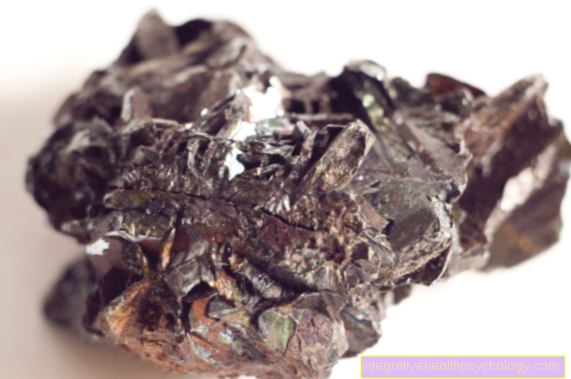
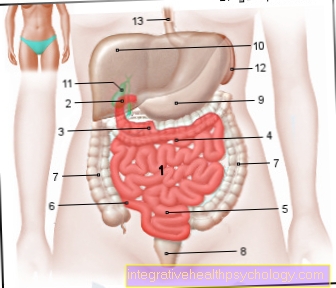



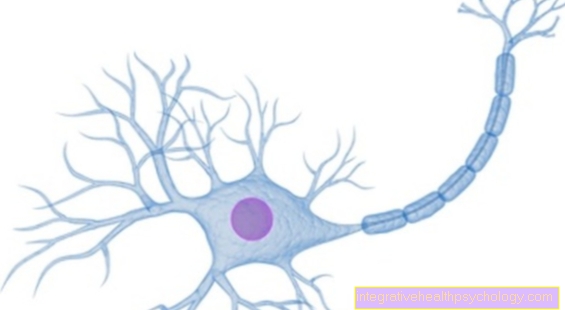

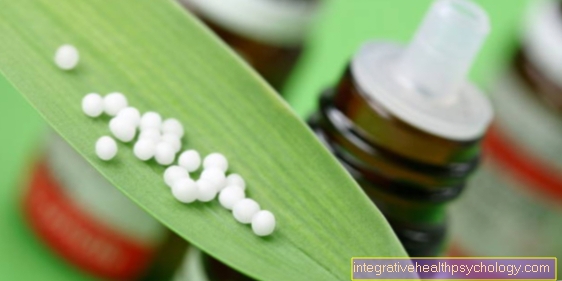
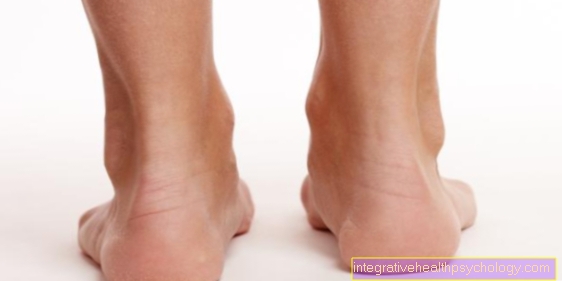

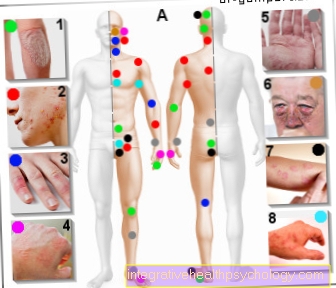


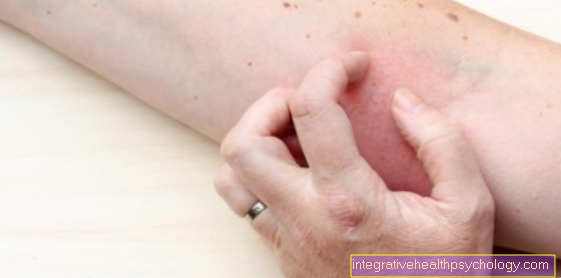




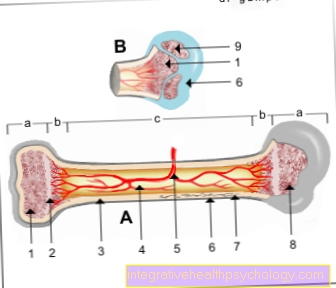
.jpg)
